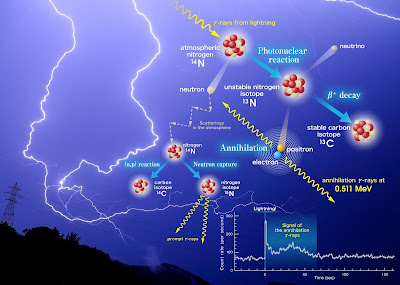 |
| A Kyoto University-based team has unraveled the mystery of gamma-ray emission cascades caused by lightning strikes. Credit: Kyoto University/Teruaki Enoto |
Topics: Modern Physics, Particle Physics, Research, Weather
A storm system approaches: the sky darkens, and the low rumble of thunder echoes from the horizon. Then without warning... Flash! Crash!—lightning has struck.
This scene, while familiar to anyone and repeated constantly across the planet, is not without a feeling of mystery. But now that mystery has deepened, with the discovery that lightning can result in matter-antimatter annihilation.
In a collaborative study appearing in Nature, researchers from Japan describe how gamma rays from lightning react with the air to produce radioisotopes and even positrons—the antimatter equivalent of electrons.
"We already knew that thunderclouds and lightning emit gamma rays, and hypothesized that they would react in some way with the nuclei of environmental elements in the atmosphere," explains Teruaki Enoto from Kyoto University, who leads the project.
Lightning, with a chance of antimatter, Kyoto University, Japan, Phys.org
Comments